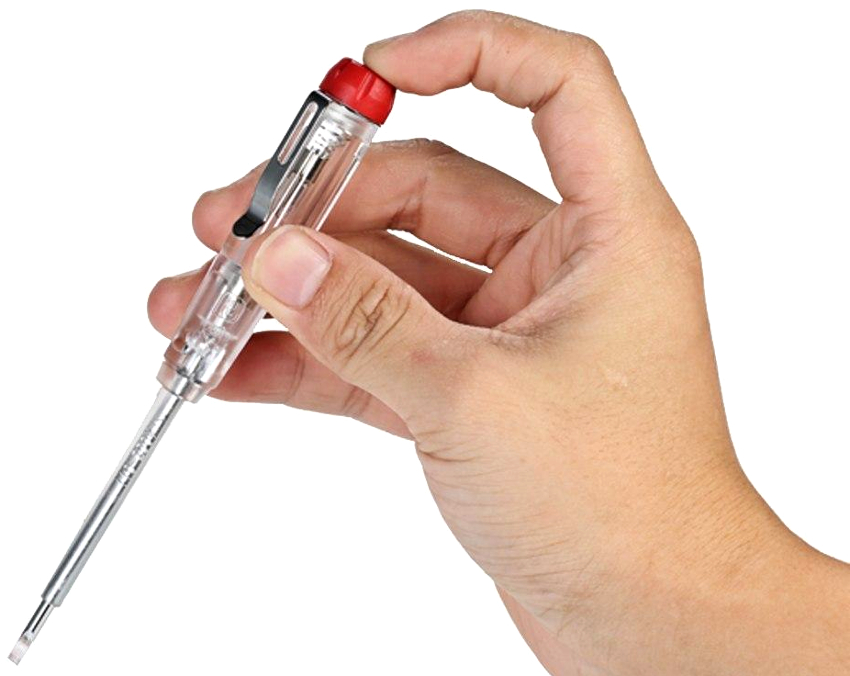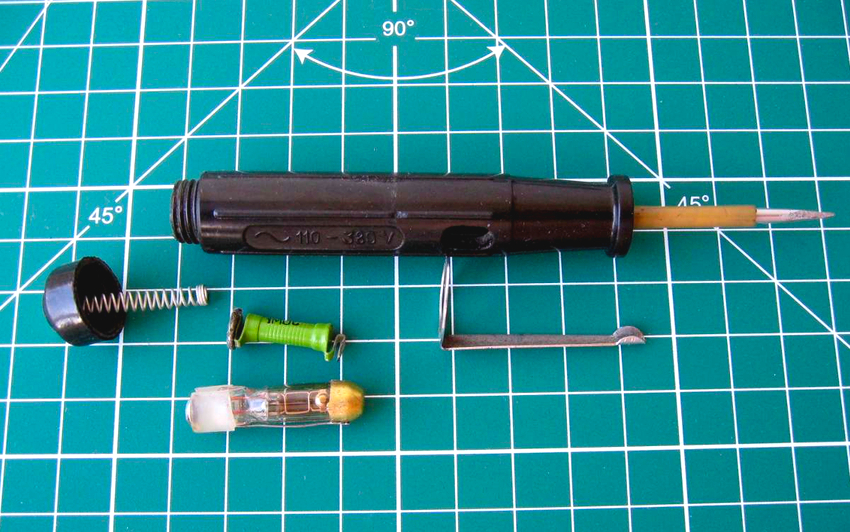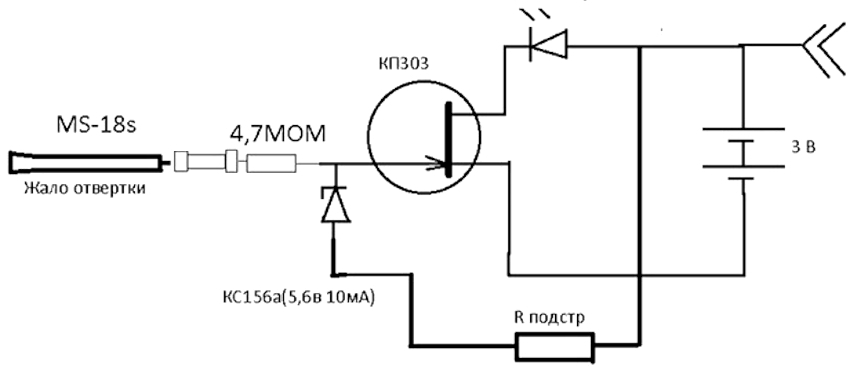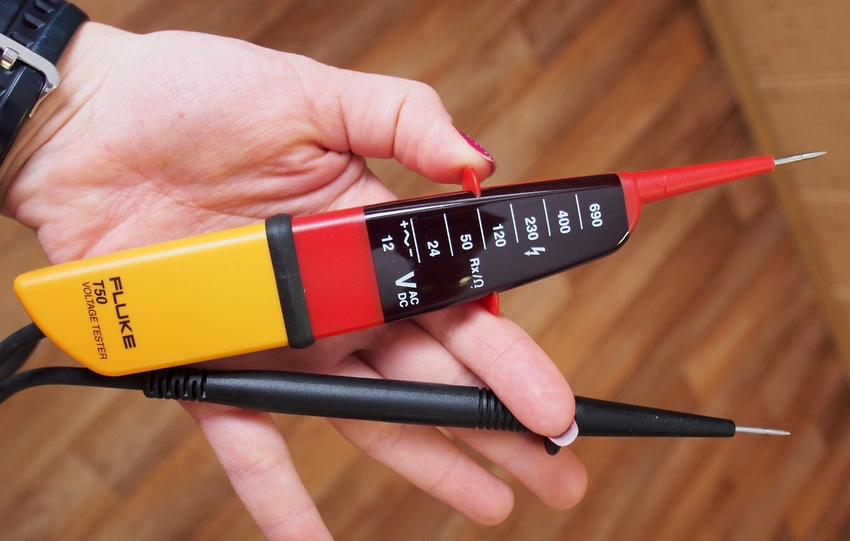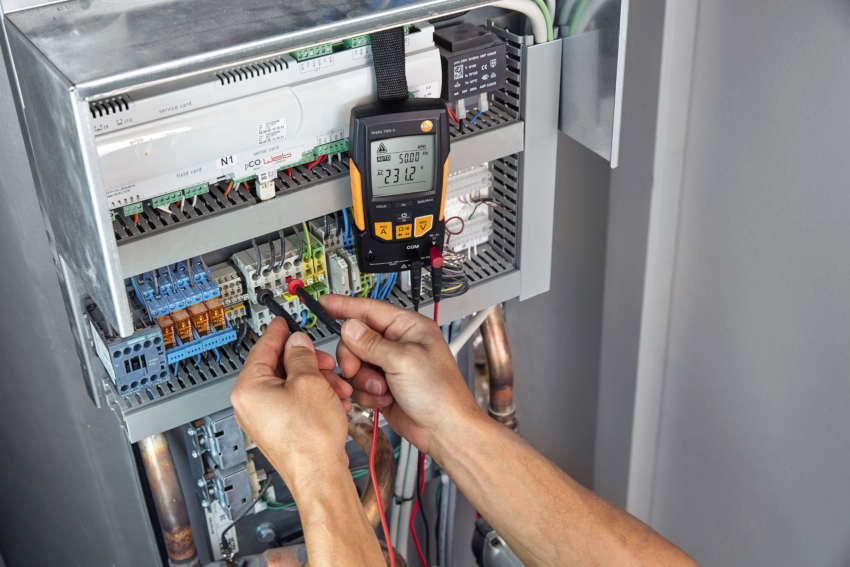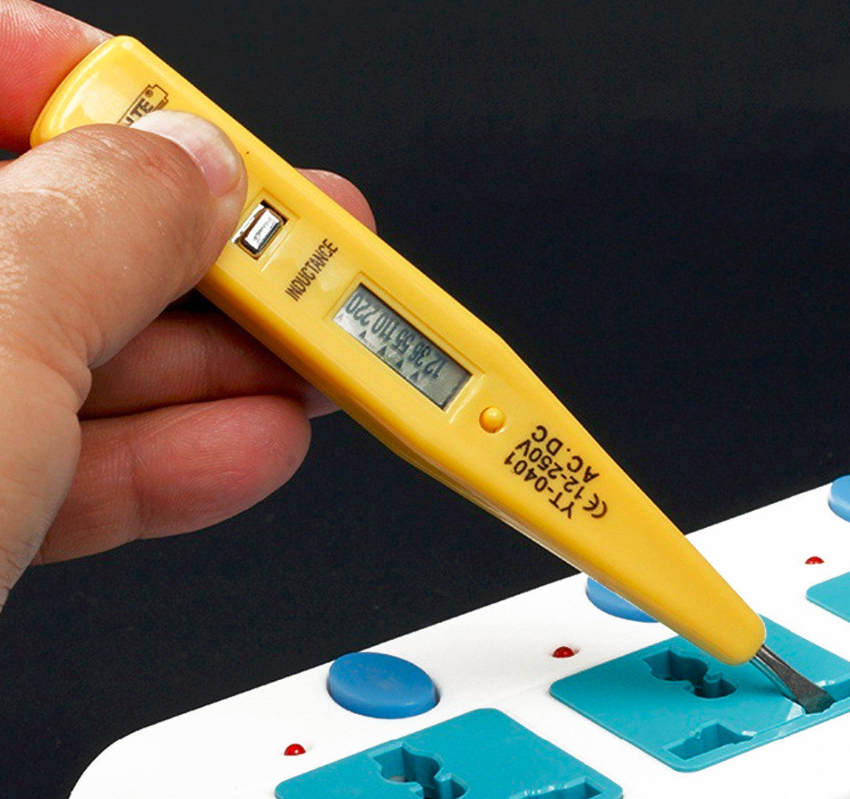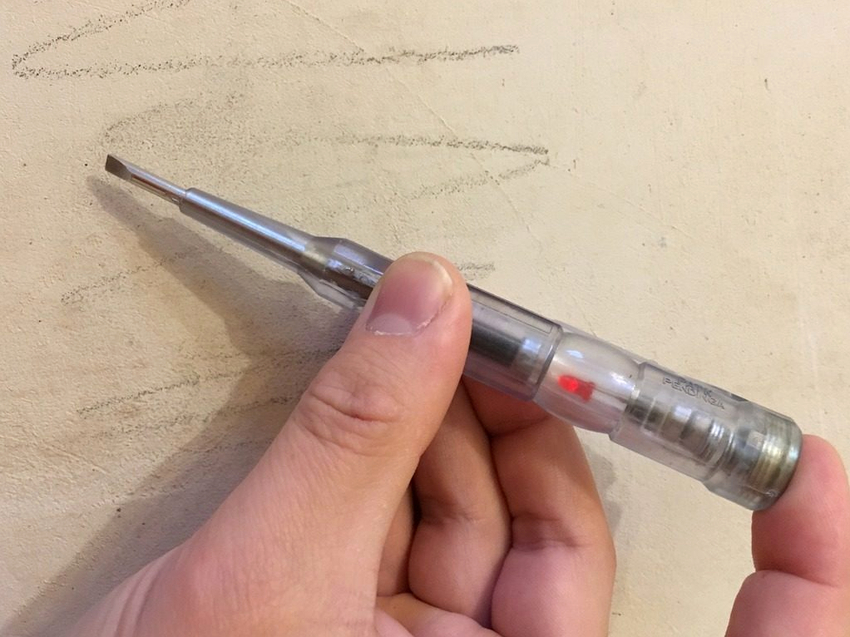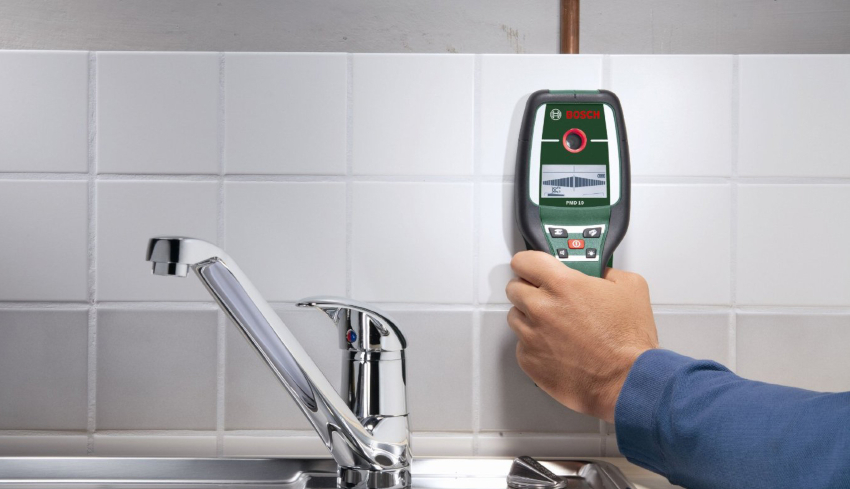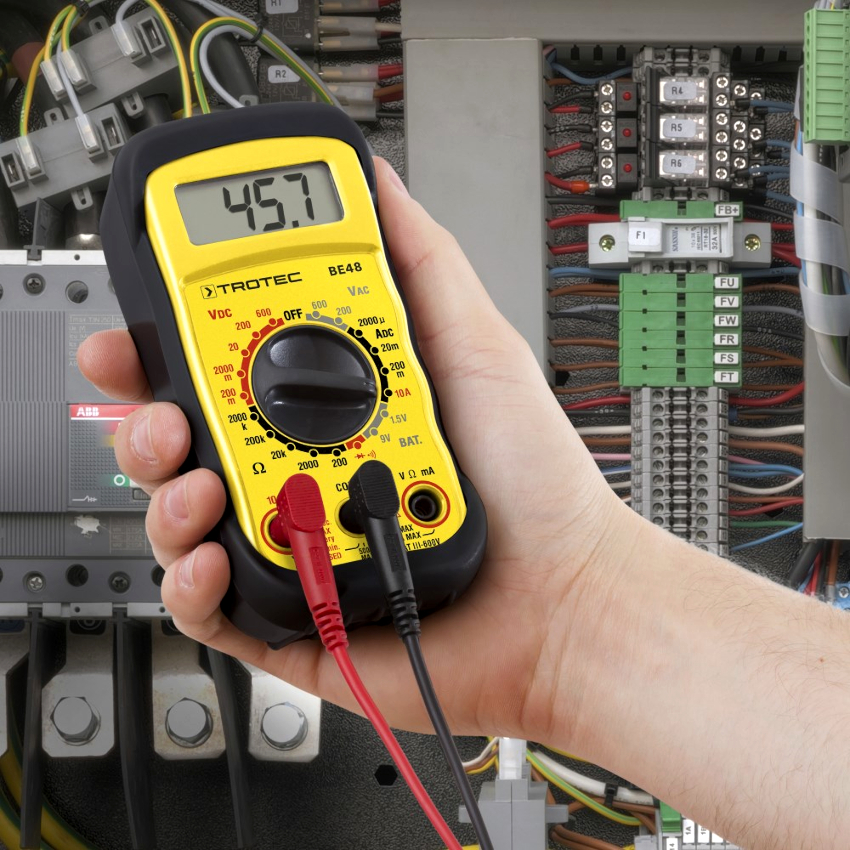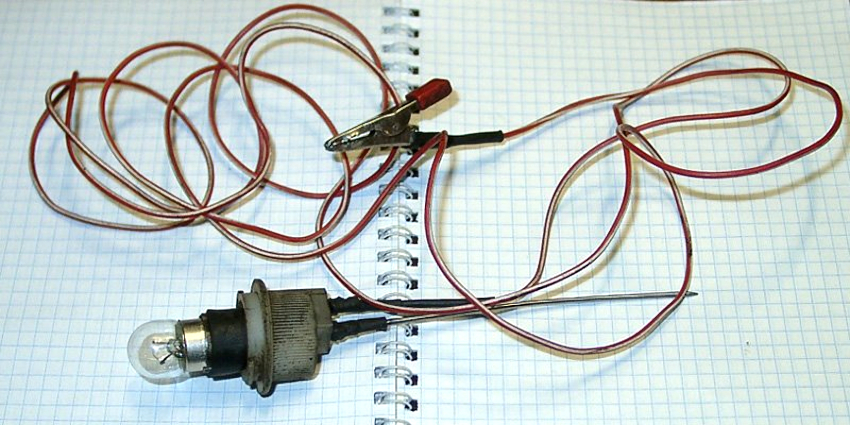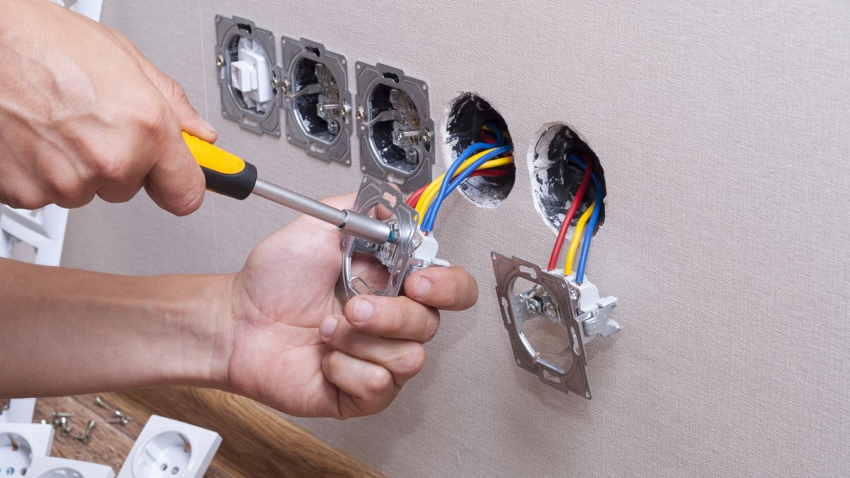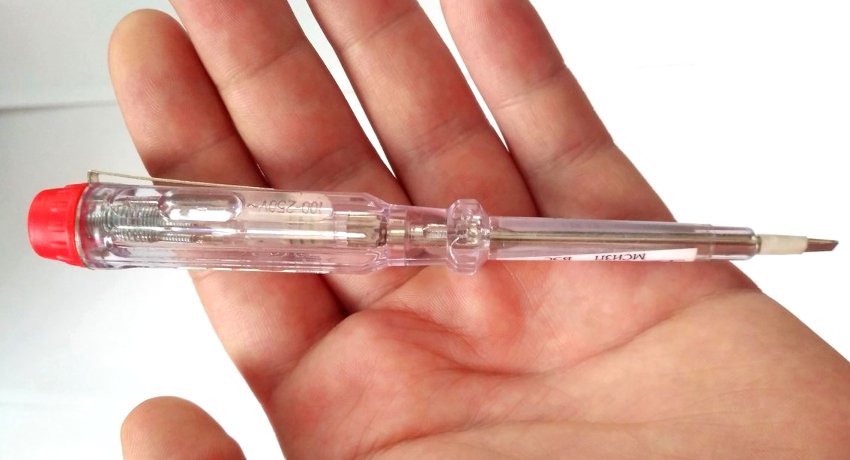My home is my fortress, hearth, refuge ... And if this place is so important for everyone, then certain conditions must be maintained in it. By trying to be less dependent on others, it will be possible to create the most comfortable life. It is worth understanding and learning how to use an indicator screwdriver, and then electrical appliances and lighting that have serviceable contacts and are provided with uninterrupted power will work normally.

If you understand how to use an indicator screwdriver, then electrical appliances and lighting will work without interruption.
Content [Hide]
- 1 Indicator: This is a device for detecting the presence of voltage
- 2 Indicator screwdriver diagram: the main elements of the device
- 3 Voltage indicator types: single-pole and double-pole devices
- 4 Digital multimeter tester: how to use the device
- 5 How to determine the phase and zero with an indicator screwdriver
- 6 Indicator screwdriver with hidden wiring detection
- 7 The price of indicator screwdrivers from well-known manufacturers
- 8 "Control": a simple homemade electrician's probe
- 9 How to check the phase without an indicator screwdriver
- 10 How to use an indicator screwdriver: safety precautions
Indicator: This is a device for detecting the presence of voltage
An indicator is a device that monitors the state of a physical process and visually reflects its changes. Quite often this tool is called an "electrician's screwdriver". You can't argue with this: every specialist who is engaged in laying electrical cables or repairing electrical equipment has such a device.
Users of electrical appliances can also monitor the state of power or equipment, determine the locations of breakdowns and open circuits. And in these situations, such opportunities will be provided by the same device, which is generally available in terms of use, - an indicator. Today it is found in almost every home. The absence of an indicator complicates making the right decision in the event of a voltage failure, since it is almost impossible to find out if only the house (apartment) is de-energized or if this is a consequence of a larger breakdown, without the presence of a tool.
The principle of operation of the indicator screwdriver is quite simple and consists in the following:
- the sting of the device touches the powered wiring;
- the passing current illuminates the light bulb;
- the resistor lowers the voltage by creating a significant resistance;
- through sensory contact with the human body, the current goes into the ground.
It is worth paying special attention to the fact that the tension passing through the human body is imperceptible and completely safe for life and health. The device does not require any special skills to use it.
Indicator screwdriver diagram: the main elements of the device
The tool has a small size, shape, comfortable to grip with the palm. The main elements that make up the structural device of the indicator screwdriver include:
- a plastic case, consisting of a handle and a tip, the latter accommodates a sting;
- resistor;
- indicator light (lights up when the voltage exceeds 50 volts);
- metal spring for extending the tip;
- metal plate to ensure contact with the human body.
The above are the main details that are typical for the simplest devices. To understand how to use a tester screwdriver, you should study the device of the tool, which may differ depending on the type of product. For example, the industry produces devices with LED lamps, sound indication, with an additional board that provides switching between different modes.
The design may not have a spring. In such a device, the sting does not go into the body and does not extend, but has a constant position and is closed with a cap during storage of the device. If the indicator is powered by batteries, there is an additional compartment in the case. Some models are equipped with a holder similar to the one found on writing pens. This detail greatly simplifies the transfer of the device.
Helpful advice! When choosing a screwdriver, it is worth considering that the indication will be more noticeable for a device with a light or translucent body, especially if the device is used in a well-lit room.
Voltage indicator types: single-pole and double-pole devices
Modern industry produces a large number of different indicators. There is no definite standard classification for them. According to the characteristics of the technical device, the devices can be divided into single-pole and double-pole, and passive and active products are also distinguished. In this section, we will focus on classification based on the first attribute.
Single pole indicators. This type includes the simplest devices, the design of which is described above: based on a sting and a neon lamp for indication. More advanced single-pole devices have an LED lamp, battery power, a sound signal - in addition to the glow of the lamp. According to the principle of operation, such indicators are identical to the simplest devices, but there is a possibility of continuity of wires.
The most advanced single-pole models have a complex structure, although the principle of operation remains. In addition to the functions already listed, they have the ability to detect the breakage of hidden wires under a layer of plaster.
The two-pole type of indicator screwdrivers differs in that it has not one, but two cases. Each is made of dielectric material, has a backlight - a neon or LED lamp. Some devices are equipped with an audible signal. The two bodies are connected by a wire, the length of which usually does not exceed 1 m, both have a sting. Such devices are considered professional, used to check the presence of current between two contacts. Among the two-pole, there are models that determine not only the presence of voltage, but also its magnitude.
Passive voltage and current indicators: functioning features
The second sign of the classification of indicators is their division into active and passive devices. It is based on the functional features of the tools. Passive devices include devices that differ in the following characteristics:
- Not complicated. Single-pole, consist of one housing with elements placed in it.
- Limited functionality.The only thing that this type of indicator screwdriver shows is whether there is voltage at a certain point in the circuit.
- Non-professional tool. It is more often used in everyday life, it is unacceptable for electricians due to the lack of opportunities to provide the necessary examination of the condition of electrically conductive cables.
The advantage of these indicators is that when determining the presence of voltage, zero is not needed, its role is played by a person who has a screwdriver-indicator in his hands. The peculiarity of its device also lies in the fact that the resistor, due to its significant resistance, does not determine the presence of a voltage below 50 volts.
It is not difficult to understand how to find the phase with an indicator screwdriver of this type. The sting should touch the conductor, and with your hand press the plate on the device body. In the presence of voltage, the neon lamp will light up.

Passive indicators determine only the presence of voltage at a certain point in the electrical circuit
Characteristics of active screwdriver voltage indicators
Active indicators have a more complex structure. Inside the case is a circuit that functions slightly differently from passive devices. Such a device is more sensitive. The LED voltage indicator reacts not only to the presence of current, but also to the electromagnetic field that is necessarily formed around the conductor.
Active indicators have the following technical characteristics:
- Having your own power source. There is a battery inside the case that activates the internal device.
- LED instead of a neon lamp.
How to use the LED indicator screwdriver? If you grasp the sting with one hand and touch the plate on the body with the other, the LED lamp will react - it will light up. This functionality is actively used in wire continuity.
Helpful advice! When working with an active indicator, it is necessary to take into account its following feature: increased sensitivity, in addition to providing additional functions, often becomes a problem, since the indicator sometimes indicates the presence of voltage where there is none and cannot be.
Digital multimeter tester: how to use the device
This device is an improved version of the active indicator. This is a voltage measuring tester. You can use it as a normal device, too. Professionals call this tool a “multimeter” because it can perform several functions:
- indicate the presence or absence of voltage;
- determine the strength of the current and the magnitude of resistance.
These testers have switches that adjust the sensitivity level. The device can be used for contact and non-contact methods of detecting the presence of voltage and voltage.
The device, in addition to the light one, is also equipped with a sound signal. The design has a digital display, which reflects the measurement indicators.
Important! It is easy to purchase an additional clamp for the multifunctional tester, with which you can determine the current strength without removing the insulating layer.
In order to confidently imagine how to find the phase and zero with an indicator screwdriver of this type, you need to carefully study the description of the device and the instructions. Some models, in addition to the above functions, are capable of checking the temperature of energized equipment. These capabilities are important for those who control the operation of electrical cabinets, electric motors, etc.
Almost all modern houses are equipped with cabinets from where the electrical cables are wired. And relatively powerful engines on the farm are not uncommon. Therefore, a multifunctional tester is often needed in everyday life, and not a simple indicator screwdriver.
How to determine the phase and zero with an indicator screwdriver
The need to determine the phase and zero arises quite often. Basically, such a need arises when replacing an outlet or switch. Before posting information on how to check zero and phase with an indicator screwdriver, it is worth saying a few words about what these two concepts mean. The line voltage, that is, the voltage between the two phases, is 380 volts, but in homes it is 220 volts. Connection to the neutral wire phase and provides the required voltage level.
Determination of phase and zero in the presence of two wires can be done in the following way:
- de-energize the wires by disconnecting from the power supply;
- strip the ends by 1.5 cm, separate them so that a short circuit does not occur when electricity is supplied;
- apply voltage;
- using the indicator screwdriver, touch the end of the wire, pressing the metal plate on the screwdriver handle with your hand.
If the light on the device lights up - this is a phase, if not - zero.
In conditions where there are three wires (phase, zero and ground), a simple device and even an indicator screwdriver with a battery cannot be dispensed with. You will need a multimeter. Finding a phase with it will not be difficult. But you can determine the other two wires as follows: touch the first probe to the phase, and the second to one of the remaining conductors. If the voltage is about 220 volts, then this is zero. Then you should repeat the steps: attach one of the probes to the remaining wire. The voltage will be significantly less than 220 volts. Hence, this is grounding.
Indicator screwdriver with hidden wiring detection
The term "dialing" has already been used in the article. This is one of the functions a tool can have. Such devices are LED, a battery is used for power supply. Precisely because a battery is required for a dial indicator screwdriver, many prefer simple options that, in fact, are eternal.
The device with a continuity can be based on the following schemes:
- with a field-effect transistor;
- with a bipolar compound transistor.
The control factor for both types of element is quite high. Even circuits with high resistance, enclosed between the screwdriver pins, unlock the transistor, and the LED is triggered - lights up. The same happens when the sting gets into the electromagnetic field.
Related article:
How to connect copper and aluminum wire: tips and a detailed guide
Installation options and features of outdoor work. Common mistakes and possible problems, important rules and useful tips.
If the broken wire is connected to the phase, then when you hold the tip along the place of its placement and when you hold the top of the screwdriver with your hand, the light will glow. After the break, the glow will disappear.
Important! When using the voltage indicator as a continuity, it is necessary that zero is parallel to the phase, and the end of the tested wire has a load.
If you run the indicator along the cable under the plaster, the LED will also light up. In this case, it is imperative to ensure contact with the upper point. If the screwdriver is moved 2-3 cm relative to the wire, it will go out.
The function of detecting an open circuit, including under plaster, is inherent only in indicator screwdrivers - such operations cannot be performed with a multimeter.
The price of indicator screwdrivers from well-known manufacturers
With regard to the cost of voltage indicators, devices should be divided into three categories.
Simple options. These are screwdrivers with a tip, a housing, a neon lamp and a resistor. The price for such products ranges from 20 to 40 rubles.Despite the durability of operation, manufacturers give a guarantee for such devices for a year. Probably, the probability of mechanical damage to the plastic case plays a role.
Screwdrivers with additional functions. The possibility of dialing and detecting a break under the plaster provides for a more complex design. Consequently, the price of indicator screwdrivers of this type will be higher. The minimum cost is 45-50 rubles, the maximum is 200 rubles. A high price among this type of device is possessed by those models where it is possible to adjust the sensitivity level.
Multimeters. They differ in the highest cost, since they are a combination of three devices in one device at once: an ammeter (current measurement), a voltmeter (voltage measurement) and an ohmmeter (resistance measurement). The price of such testers varies from 2500 to 5000 rubles.
Many domestic and foreign companies are engaged in the production of indicator screwdrivers. According to users, the most reliable and durable products are JTC, EXPERT, JONNESWAY products. The above price range is focused on the devices of these manufacturers.
"Control": a simple homemade electrician's probe
If there is an indicator screwdriver in the arsenal, the steps for its use are clear. And if you don't have one at hand and for some reason can't be in the near future? In such situations, knowledge and ingenuity will come to the rescue. It is not necessary to reinvent the bicycle, since the simplest home-made device for determining the presence of voltage already exists - this is a control. This is what professional electricians called it.
The device consists of a light bulb screwed into a socket, and two wires that function as probes. How does the indicator light screwdriver work? Simple and quite effective. The wires must touch the elements in which the presence of voltage should be checked. By the degree of brightness of the lamp, it is possible to determine not only the presence of voltage, but also its compliance with the norm.
Such a homemade device allows you to check three phases at once. For this, two series-connected controls are used: if two wires have one phase, the lamps will not light up.
This self-made device will not function if there is no zero, but this situation is almost impossible both in everyday life and in production.
Important! All regulatory documents concerning the use in the home and in the production of electrical appliances and power tools recommend using only factory-made devices.
How to check the phase without an indicator screwdriver
How to determine the phase without indicator? There are several ways. They are sometimes the only way to properly install a switch or replace a burnt-out socket.
The first one is the fastest, easiest and most reliable one. It is based on visual inspection of the wires. The fact is that the multi-colored braid is not accidental. It is the color that indicates neutrality or being under the phase of the vein. Remembering the correspondence is difficult and unnecessary. If necessary, just look at the marking table.
The second option allows you to establish the presence of voltage using the same control. One wire should be attached to the metal of the heating system, cleaned to a shine, and the other should be touched to the cores, where you need to determine the phase. If you touch a live conductor, the light will light up. In the absence of an incandescent lamp at hand, you can use a neon lamp.
The third method, suggesting how to find the phase without an indicator screwdriver, can bring a smile, since the circuit includes ... potatoes. In addition, you will need two wires about 50 cm long and a 1 MΩ resistor.One cable must be connected to the heating metal, the second one must probe the core of interest. The ends of the wires must be inserted into the cut of the potato. If after a few minutes traces of darkening appear, it means that the vein is phase. If not, then zero was determined. It should be noted that the holding period should be 5, maximum 10 minutes. No conclusions should be drawn before the expiration of the time limit.
How to use an indicator screwdriver: safety precautions
Electricity is a source of increased danger. In accordance with the regulations, it is not safe to consider a room that has at least one switch or socket. It follows that when using electrical appliances or tools used for the repair or maintenance of conductive elements, certain requirements must be strictly observed.
The first thing you need to know when detecting the presence of current in the veins is how to check the indicator screwdriver. In order to make sure that the device is working properly, you will need to simultaneously touch the plate on the handle and the tip. The LED lamp should light up. This is a test for models with batteries. You can check the simplest screwdriver by touching the sting to the live parts under voltage and by touching the metal plate on the handle with your hand.
In order to avoid the influence of current during the use of the indicator, it is strictly forbidden to take your hand below the handle.
Do not use the tool as a screwdriver. The plastic part can be damaged, causing the device to become unusable.
When performing such actions as checking the socket with an indicator screwdriver, establishing zero and phase, determining the presence of voltage in the network up to 1 kW, there are no restrictions on using the device. If this indicator exceeds this level (more than 1 kW), it is imperative to use dielectric gloves when working with the indicator.
Electricity is a source that provides comfortable life through the operation of various household mechanisms. Food, lights, hot water, massagers, hair dryers, etc. will not be able to function without power. You can eliminate many defects and breakages using the indicator. Which device option to choose is an individual decision, depending on the needs and the availability of certain experience.
